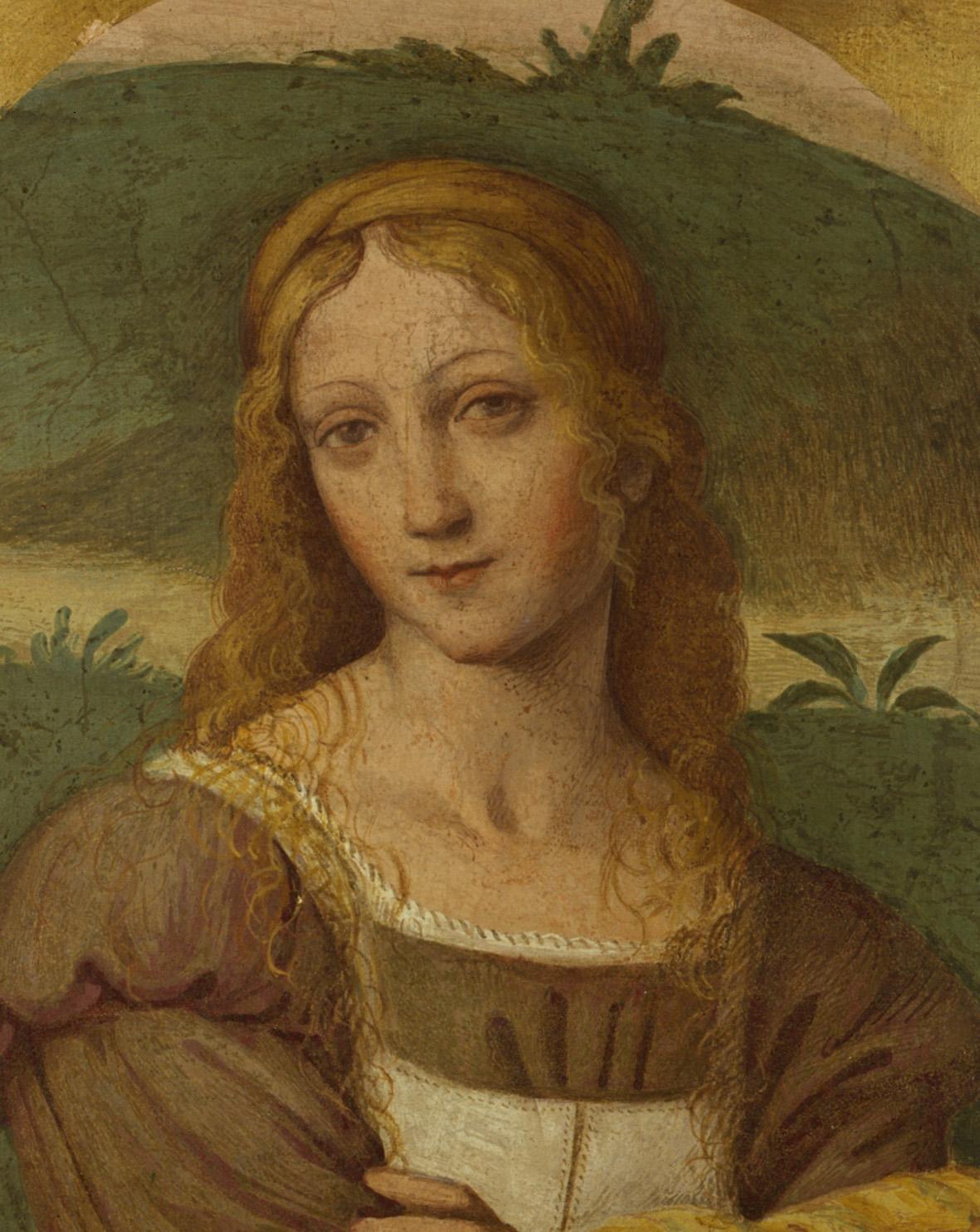To have a fresco in its place, or having it replaced in a museum?
- Bernardino Luini, “Female figure”, 1521-1523, torn and restored fresco on wood, cm 44x35x47, Pavia, Pinacoteca Malaspina
- Berlinghiero da Lucca, “Massacre of the Innocents”, detached fresco on a support of alveolar resin, cm 350×205, Bologna, Basilica di Santo Stefano
- Francesco da Rimini, “Four figures in costume”, fresco torn applied on canvas and plywood, cm 70.5x98x2.5, Bologna, Pinacoteca Nazionale
- Francesco Raibolini known as il Francia, “Two male heads” 1500 c, fresco fragment embedded in plaster, cm 70×79.5×53, Bologna, Pinacoteca Nazionale
- Ercole de Roberti, “Weeping Magdalene”, cm 39.3×39.3, Bologna, Pinacoteca Nazionale
What is right: to leave a fresco in the location for which it was thought for, or to remove it and place it in a museum? What is the best relationship between an ancient work and a contemporary visitor: to find it in its original context or, on the contrary, in the halls of a museum? Sometimes the works have been moved for preservation reasons, other times due to the pressure of collecting, or else for the fury of researchers. The cases are many and diverse and each one needs its own judgement.
What we do know is that the first samples of the detachment of wall paintings dates back to the time of Vitruvius and Pliny. The technique consisted of the removal of the work together with all the plaster and the wall that housed it. This procedure was abandoned for centuries and it found new fortune in the Renaissance.
It was, however, a difficult and time-consuming modus operandi. From the second quarter of the eighteen century it was thereby replaced by the more innovative and practical technique of the tear, that is a practice with a special adhesive which allowed to tear the frescoes and transfer them on a canvas. A true revolution in the field of restoration, preservation, but also of collecting the Italian mural heritage. This was the approach that has been used, for instance, in the newly rediscovered Pompeii and Herculaneum, to transport the most beautiful wall paintings of antiquity on new media.
From that moment on and until the end of the nineteenth century a large number of masterpieces of Italian painting were torn loose from the vaults of churches, chapels, from the walls of public and private buildings to be carried to safer places, in the noble and princely collections and galleries in Italy and all over Europe. Often, beyond the clear need of conservation, implicit collectors’s aims were hidden. Andrea del Castagno, Bramante, Bernardino Luini, Garofalo, Girolamo Romanino, Correggio, Moretto, Giulio Romano, Niccolò dell’Abate, Pellegrino Tibaldi, Veronese, Ludovico e Annibale Carracci, Guido Reni, Domenichino, Guercino: all the great masters of Italian art between the mid-eighteenth century and the end of the nineteenth century were subjected to extractions.
Since World War II, an impressive number of frescoes have been torn. The damage caused to some of the major monuments of painting by the Italian wartime bombing in fact led to the belief that the only way to avoid the repetition of such irreparable losses (like Mantegna in Padua, Tiepolo in Vicenza, Buffalmacco and Benozzo Gozzoli in Pisa ) would be putting the paintings in safer places. At that time the most impressive campaign of tears and breaks that Italy has ever known indeed began. Giotto, Buffalmacco Altichiero, Vitale da Bologna, Pisanello, Signorelli, Perugino, Pontormo, Tiepolo left forever the wall that had kept them for centuries to find dwelling in some of the most important museums in the nation. From 16 February to 15 June 2014 most of those frescoes will be in the halls of the Museum Mar in Ravenna for the exhibition “The charm of the fresco. Masterpieces torn from Pompeii to Giotto to Correggio to Tiepolo” . Amongst the works on display there are true gems. But if it was a good or a bad idea to move the works from the places where they were born for, then it’s up to you to judge.
January 28, 2014





